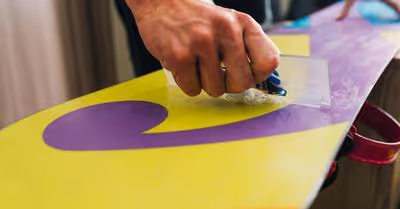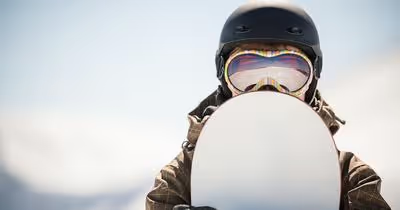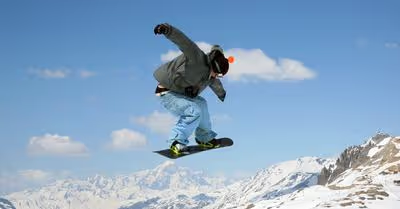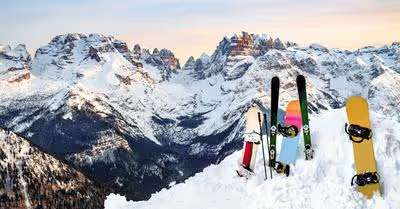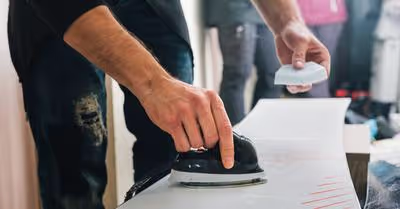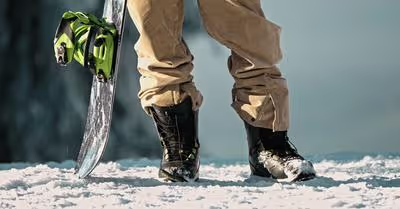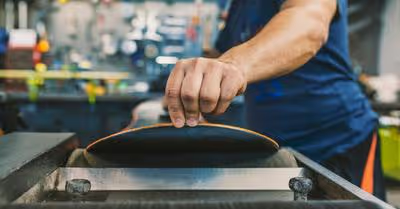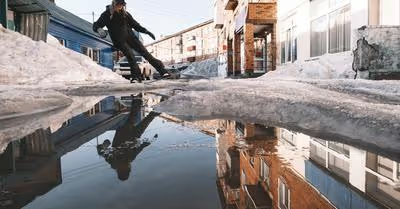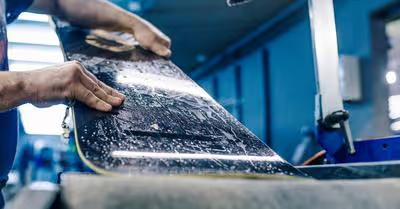Table of Contents
What Is a Powder Snowboard?
Yes, you can go into the powder on any snowboard and have a nice time, but nothing beats having the perfect tool for the task. In the soft stuff, dedicated powder snowboards are a delight to ride, delivering easy floats and letting you transform the mountain into your canvas.
What makes a snowboard suitable for powder riding? To optimize it for deep snow performance, everything from the geometry of the snowboard to the rocker profile is adjusted. Powder boards frequently have directional curves and even split swallowtail designs, whereas park and all-mountain snowboards are twin-tipped and symmetrical.
Features
Riding a board intended for deep powder is the greatest way to get the most out of the experience. These boards are designed to float above the deep snow and provide the mobility required to avoid the risks that you'll usually find on the snow. We understand, however, that it isn't always feasible.
However, you probably won't need one if you prefer to ride at resorts rather than in the backcountry. But if you intend on spending a lot of time in the backcountry, it'll be well worth the money to be able to get clean, crisp runs.
The features of a powder snowboard make it different from other types of snowboards, such as freestyle snowboards, freeride, and all-mountain snowboards. Here, let's take a quick look at some of the main features of a powder snowboard.
Flexibility
Flexible powder boards are more enjoyable to ride since they are simpler to twist for maneuverability. Many high-end powder boards don't include carbon inserts or tougher materials because of this. For additional pop, many powder boards feature a directional flex, with a softer nose and a stiffer tail.
Setbacks
Extra binding mounts on some boards allow you to stand further back on your board. This setback posture allows you to adopt a regular stance on less snowy days and then move back on heavy snow days.
Rockers
The most committed powder boards, like surfboards, have huge rockers in the nose or complete rocker profiles. Powder boards might have a flatter camber; however, a rocker will feel the most dynamic on deep days.
Directional Shape
Swallowtails and other directional elements, such as various tail forms, can also aid in keeping your nose up. Furthermore, while you surf through powder, differing nose and tail shapes may influence the snow flowing out the back of your board.
Swallowtails can also help you keep your tail area low while still providing you with increased leaping power. They're useful since they move your rear contact point back without adding tail area.
Taper
A taper with a thinner back and broad front is advantageous because it keeps the nose up while keeping the tail down.
While riding a board with less taper, the rider is able to push the tail down, but a taper is considered to be much easier on your back foot, especially during deep powder days. That said, on powder days, riding with a taper also feels more natural.
Width and Length
It goes without saying that the length of the particular powder snowboard that you choose will also make a difference in your overall riding experience, whether you're floating on powder or cruising well-groomed runs.
The entire area of the board is the most important component in determining float. Even a little increase in board width can result in a significant increase in board area, allowing you to stay on top of the powder. Many firms will also abbreviate the board, making the form considerably easier to turn and more enjoyable to play with. Volume-shifted boards are those that are shorter and broader than usual.
To get the proper snowboard length, take into account your height and weight, as well as the style of snowboarding you want to ride. People used to choose their snowboard lengths by standing the board on its tail to check how tall they were in proportion to themselves when snowboarding was fresh on the scene.
It was considered the right size if the board's nose reached halfway between their chin and nose. You may still use that approach today, but using your body weight, as many snowboard manufacturers propose, is more exact. Today, there are multiple lengths of powder snowboards to choose from, making it easy to find the perfect board for your riding needs.
To get an accurate measurement, first, stand the snowboard on its tail, and see how high its nose is. It is recommended that the nose of a snowboard should always reach anywhere between your chin and nose while you're standing beside the vertical snowboard. For even better accuracy, sizing charts and suggested rider weights can also be used.
When Do You Intend To Use This Board for?
This is significant since some characteristics will make riding powder a lot more enjoyable. Those same characteristics, on the other hand, will make riding on groomers and park features more difficult. Someone who wants to go powder hunting at a resort should get a different board than someone who just wants to use their powder board after big storms.
What about ride switch? It is important to keep in mind that some directional boards are poor for switch riding, but their distinctive form makes powder riding a dream.
Those with more directional boards will keep your nose upright, making powder riding less exhausting and allowing you to ride much more difficult terrain. There are, however, a number of excellent boards that will allow you to turn on powder.
When riding on powder, a frequent misperception is that you must lean back strongly. That isn't the case at all. Your weight should be shifted back a little, but you should still steer with your front leg. If you sit too far back, you won't be able to steer as smoothly, and your rear leg will become weary soon.
All you have to do is just move your hips to the rear and bend your back leg a little more than normal to keep the board floating through the powder.
Do You Really Need a Powder Snowboard?
One of the most important factors that affect your boarding experience is the weather. The texture and consistency of the path have an impact on your ability to maintain speed, cut corners, and recover from falls.
The perfect snow conditions for snowboarding are fresh powder snow, yet even ideal circumstances necessitate alterations in riding technique. Although less desired, a hard pack provides certain advantages for cyclists interested in high-speed riding.
So, do you really need to use a powder snowboard? It depends on how a 'powder snowboard' is defined. Is the snowboard a little stiff, such as the K2 Turbo Dream that's sized a bit larger for powder and freestyle snowboarding, or is it a slightly stiffer all-mountain option like a Burton Fish that's literally exclusively intended for riding powder?
Recent Articles



